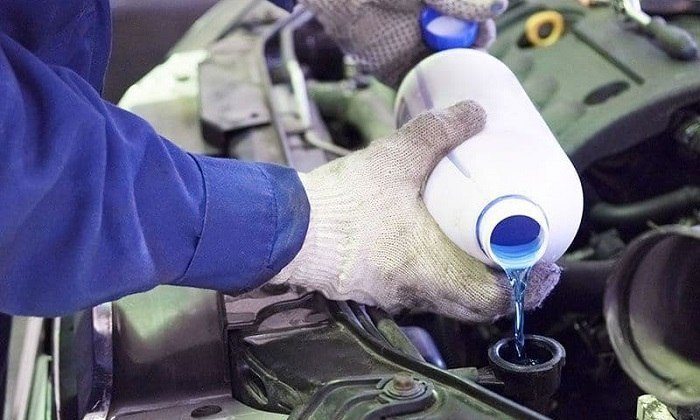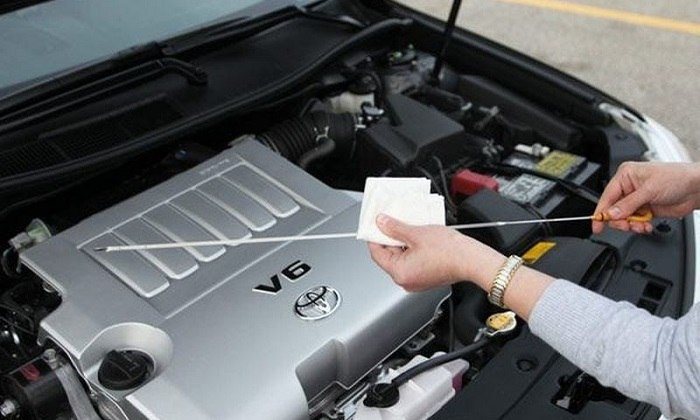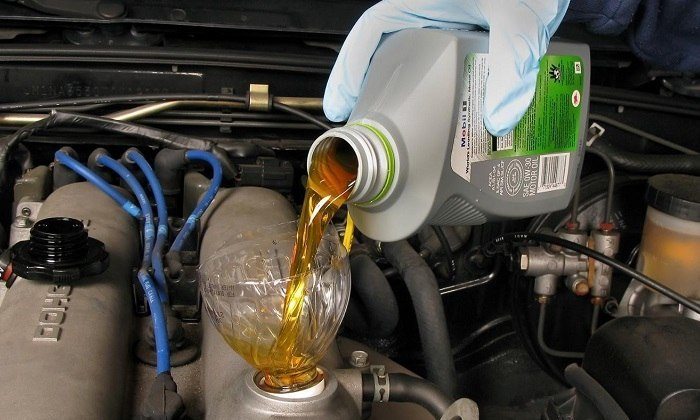by Joshua Thomas
The transmission fluid is what makes a vehicle’s transmission system function seamlessly. It is the lifeblood of the system because without it the car would not drive smoothly.
But, while many motorists understand that they need to have enough transmission fluid at all times, many seem to overlook another important aspect which is ensuring you also do not overfill the transmission system.
Overfilling the transmission system is almost as bad as not having enough fluid in the system as it can lead to serious problems, and so it is important to know how to tell when you have an overfill. Here we explain some of the symptoms to watch out for and the consequences of the overfill.
Contents

Every vehicle manufacturer will have specific recommendations on the amount of transmission fluid you need to add to your vehicle. And the main reason for this is because using too much or less can have adverse consequences.
To ensure that you give an overfilled transmission system the seriousness it deserves, here are some of the potential consequences.
One of the main functions of the transmission fluid is to cool down the transmission system, and so it might sound odd that using too much of it can lead to overheating.
In many instances, when you overfill the transmission system, there will be some leakage from the gearbox, which results from the seals being broken by the pressure build-up. This will rob the gearbox of precious lubrication, and hence leading to overheating.
If you add more liquid than necessary to your transmission system, there will be increased pressure build-up.
The increased pressure build-up will also come with another significant problem, which is air contamination. Air contamination occurs as a result of the rotating gears splashing the liquid inside the chamber. This then can lead to a chemical reaction that creates foam and air bubbles.
Air bubbles or foam in your transmission system will reduce the fluid's lubricating capability as it affects its overall viscosity and some of the gears might end up not getting any lubrication at all.
Because of the increased pressure build-up in the transmission system due to overfilling, different components of the transmission system such as the gearbox and lines will also wear out much faster.
If you expose the transmission system to the high pressure for too long, you might even end up having to replace the entire system as it will wear down within a short time.
The other consequence of overfilling the transmission system will be a total failure of the system, and this will usually occur when you leave the problem unresolved for an extended period.
Total failure will result from a combination of different things such as leaking seals, grinding metal parts and the pressure build-up.
Hence if you ignore the symptoms of an overfilled transmission system discussed below, you can end up spending hundreds of dollars on transmission system replacement.

With the potential consequences of overfilling the transmission system above in mind, it should be clear that this is a serious problem that you should not overlook.
And to make sure that you can intervene and resolve it in a good time, here are some of the most common symptoms to look for.
The first instinct that comes to many motorists’ minds when they suspect they might have an overfilled transmission system is to check the actual fluid level using the dipstick.
But while this might be a simple method as you only need to take out the dipstick and check the level of the fluid, it is not always a reliable one.
The transmission fluid will have a thinner consistency when the vehicle is operating at an optimal temperature and turn thick when the temperatures drop. Hence, the dipstick might not provide a very reliable indication.
If you are using this method to diagnose an overfilled transmission system, the right idea would be to first allow the vehicle to run for at least 5 minutes.
If you are having difficulties shifting gears, it often means there is an issue with your transmission system. In some cases overfilling your transmission system might be the source of the problem.
An overfilled transmission system can result in an excessive pressure build-up and create a foam which affects the fluid's capability to lubricate. This results in a chain of other problems such as the breakdown of seal and fluid leak that eventually ends up making it hard to shift gears.
And besides making it hard to change gears, a fluid overfill can also lead to gear slipping and other gear issues such as hard shifts.
While different things can cause your transmission fluid to leak such as tears and holes in the cylinder as a result of wear and tear, if there is too much of it in there, it might also end up leaking.
This leakage will often be manifested by the presence of a fluid puddle just below the vehicle’s transmission. And you can easily tell that it is transmission fluid from the color as it will typically be reddish.
The leakage will often come as a result of the breakdown of the seals which will often be brought about by the inadequate lubrication that comes with overfilling the transmission system. Also, the increase in pressure might force the liquid to try and escape which then leads to leakage.
While it is true the transmission system will make some sound when in operation as it has several moving parts, the sound is often not easily noticeable. Hence, when you can hear whining, grinding or humming noise from the transmission, it means there is a problem.
This symptom is often hard to diagnose since the transmission is very close to the engine, but if you drive the car regularly, it should be easy to tell when there are changes in the sound it produces.
Whining is often an indication that there is less or excess fluid in the transmission, while the grinding comes from the gears rubbing against themselves due to the inefficient lubrication caused by overfilling.
Countless things can cause your engine to overheat, but most will often be related to inefficient lubrication. And while the engine oil is what is responsible for keeping the engine cool, any issues with your transmission fluid can also result in an overheated engine.
Excess transmission fluid means the transmission system will not work optimally, and hence the engine will have to strain more to get the car moving. Having to work harder than it should, the engine can easily overheat.

The best way to fix a transmission system overfill is by taking enough precautions when filling it up to ensure that you do not add too much of it in the first place.
However, if you find out that you already have an overfilled transmission system, you need to correct the issue, and here is how to do it.
Directions
The first step is to park your vehicle on a level surface because this will help ensure that you get the actual level of the fluid in the car right. Once parked, you should then turn off the engine and allow the vehicle to cool down for at least 20 minutes before popping the hood.
Next, pull out the transmission fluid dipstick from the port and then wipe it clean with a soft cloth.
You should then reinsert the dipstick fully into the port and then remove it again to check the mark that the fluid makes, which should give you an indication of how much transmission fluid you have.
If from the step above you notice that you have more transmission fluid that is required, the only fix you have here is to reduce the quantity.
Here you can either siphon the extra fluid off using a tube or drain it out if the vehicle has a drain hole or port on the transmission fluid reservoir.
The last step is to check the fluid level again to make sure that it is okay now. And here you will need to repeat step 2 above, which is removing and wiping the dipstick and reinserting it into the port again.
Note: To make sure that you do not have to deal with an overfilled transmission system, it important to acquaint yourself with the volume that your specific vehicle model requires. In some instances, you might notice that you have too much fluid when it has already caused more serious vehicle problems, and so you should not take chances.
A vehicle's transmission system will require the right amount of fluid to function optimally. Having more or less can result in different problems, and in some instances also be the beginning of a catastrophic failure of the transmission system.
But because sometimes you can end up overfilling the transmission system unknowingly, it is important to know some of the symptoms to watch out for to ensure you take corrective measures in good time.
These symptoms will range from transmission fluid leakage to trouble changing gears. But since these symptoms can also come with other engine and transmission system issues, having your car inspected and maintained by a professional mechanic regularly is the best way to avoid an overfilled transmission.
Souces
 |
 |
 |
 |

About Joshua Thomas
Joshua Thomas just simply loves cars and willing to work on them whenever there's chance... sometimes for free.
He started CarCareTotal back in 2017 from the advices of total strangers who witnessed his amazing skills in car repairs here and there.
His goal with this creation is to help car owners better learn how to maintain and repair their cars; as such, the site would cover alot of areas: troubleshooting, product recommendations, tips & tricks.
Joshua received Bachelor of Science in Mechanical Engineering at San Diego State University.